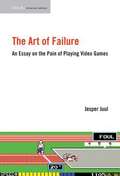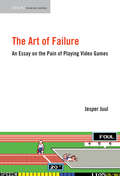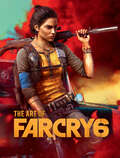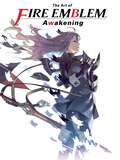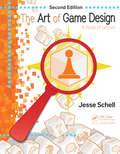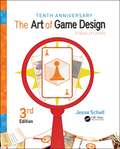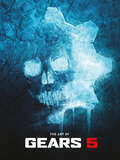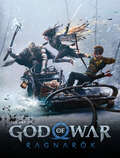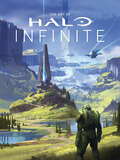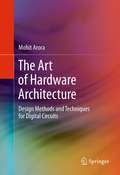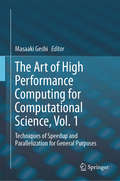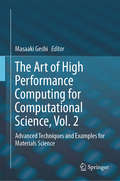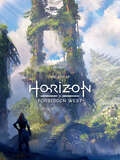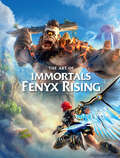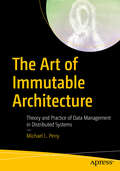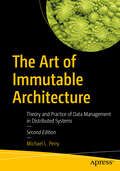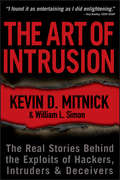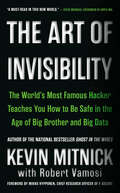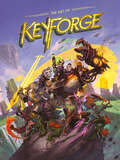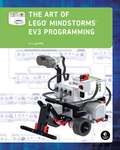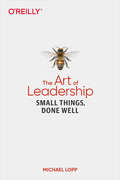- Table View
- List View
The Art of Failure
by Jesper JuulWe may think of video games as being "fun," but in The Art of Failure, Jesper Juul claims that this is almost entirely mistaken. When we play video games, our facial expressions are rarely those of happiness or bliss. Instead, we frown, grimace, and shout in frustration as we lose, or die, or fail to advance to the next level. Humans may have a fundamental desire to succeed and feel competent, but game players choose to engage in an activity in which they are nearly certain to fail and feel incompetent. So why do we play video games even though they make us unhappy? Juul examines this paradox. In video games, as in tragic works of art, literature, theater, and cinema, it seems that we want to experience unpleasantness even if we also dislike it. Reader or audience reaction to tragedy is often explained as catharsis, as a purging of negative emotions. But, Juul points out, this doesn't seem to be the case for video game players. Games do not purge us of unpleasant emotions; they produce them in the first place. What, then, does failure in video game playing do? Juul argues that failure in a game is unique in that when you fail in a game, you (not a character) are in some way inadequate. Yet games also motivate us to play more, in order to escape that inadequacy, and the feeling of escaping failure (often by improving skills) is a central enjoyment of games. Games, writes Juul, are the art of failure: the singular art form that sets us up for failure and allows us to experience it and experiment with it. The Art of Failure is essential reading for anyone interested in video games, whether as entertainment, art, or education.
The Art of Failure: An Essay on the Pain of Playing Video Games (Playful Thinking)
by Jesper JuulAn exploration of why we play video games despite the fact that we are almost certain to feel unhappy when we fail at them. We may think of video games as being "fun," but in The Art of Failure, Jesper Juul claims that this is almost entirely mistaken. When we play video games, our facial expressions are rarely those of happiness or bliss. Instead, we frown, grimace, and shout in frustration as we lose, or die, or fail to advance to the next level. Humans may have a fundamental desire to succeed and feel competent, but game players choose to engage in an activity in which they are nearly certain to fail and feel incompetent. So why do we play video games even though they make us unhappy? Juul examines this paradox. In video games, as in tragic works of art, literature, theater, and cinema, it seems that we want to experience unpleasantness even if we also dislike it. Reader or audience reaction to tragedy is often explained as catharsis, as a purging of negative emotions. But, Juul points out, this doesn't seem to be the case for video game players. Games do not purge us of unpleasant emotions; they produce them in the first place. What, then, does failure in video game playing do? Juul argues that failure in a game is unique in that when you fail in a game, you (not a character) are in some way inadequate. Yet games also motivate us to play more, in order to escape that inadequacy, and the feeling of escaping failure (often by improving skills) is a central enjoyment of games. Games, writes Juul, are the art of failure: the singular art form that sets us up for failure and allows us to experience it and experiment with it. The Art of Failure is essential reading for anyone interested in video games, whether as entertainment, art, or education.
The Art of Far Cry 6
by UbisoftExplore the vibrant island of Yara, a nation trapped in time. Dark Horse Books and Ubisoft have joined forces to create The Art of Far Cry 6, a beautiful volume that is perfect for any fan of the Far Cry adventures. Welcome to Yara. Viva Libertad!
The Art of Feature Engineering: Essentials for Machine Learning
by Pablo DuboueWhen machine learning engineers work with data sets, they may find the results aren't as good as they need. Instead of improving the model or collecting more data, they can use the feature engineering process to help improve results by modifying the data's features to better capture the nature of the problem. This practical guide to feature engineering is an essential addition to any data scientist's or machine learning engineer's toolbox, providing new ideas on how to improve the performance of a machine learning solution. Beginning with the basic concepts and techniques, the text builds up to a unique cross-domain approach that spans data on graphs, texts, time series, and images, with fully worked out case studies. Key topics include binning, out-of-fold estimation, feature selection, dimensionality reduction, and encoding variable-length data. The full source code for the case studies is available on a companion website as Python Jupyter notebooks.
The Art of Fire Emblem: Awakening
by VariousThe Art of Fire Emblem Awakening contains an in-depth, behind-the-scenes look at the smash-hit 3DS game, from beautifully illustrated renditions of your favorite characters, to storyboards for in-game events, character designs, weapon designs, character profiles, and the entirety of the script with every possible branch of dialogue! Relive some of the most poignant moments of the game, or see what might have been if you had made different in-game decisions with the Art of Fire Emblem Awakening!
The Art of Fluid Animation
by Jos StamThis book presents techniques for creating fluid-like animations with no required advanced physics and mathematical skills. It describes how to create fluid animations like water, smoke, fire, and explosions through computer code in a fun manner. It includes a historical background of the computation of fluids as well as concepts that drive fluid animations, and also provides computer code that readers can download and run on several platforms to create their own programs using fluid animation.
The Art of Game Design: A Book of Lenses, Second Edition
by Jesse SchellGood game design happens when you view your game from as many perspectives as possible. Written by one of the world's top game designers, The Art of Game Design presents 100+ sets of questions, or different lenses, for viewing a game's design, encompassing diverse fields such as psychology, architecture, music, visual design, film, software enginee
The Art of Game Design: A Book of Lenses, Third Edition
by Jesse SchellThe Art of Game Design guides you through the design process step-by-step, helping you to develop new and innovative games that will be played again and again. It explains the fundamental principles of game design and demonstrates how tactics used in classic board, card and athletic games also work in top-quality video games. Good game design happens when you view your game from as many perspectives as possible, and award-winning author Jesse Schell presents over 100 sets of questions to ask yourself as you build, play and change your game until you finalise your design. This latest third edition includes examples from new VR and AR platforms as well as from modern games such as Uncharted 4 and The Last of Us, Free to Play games, hybrid games, transformational games, and more. Whatever your role in video game development an understanding of the principles of game design will make you better at what you do. For over 10 years this book has provided inspiration and guidance to budding and experienced game designers - helping to make better games faster.
The Art of Gears 5
by The Coalition StudioOver 200 pages of gorgeous art that delves into the characters, settings, and equipment of Gears 5--all collected in a full-color digital tome!Unearth the origins of the Swarm and journey across the war-torn and diverse landscapes of Sera while exploring art from the first Gears game to be headed by Kait Diaz. This bold new chapter in the Gears of War series is examined in fastidious detail, chronicling the development of the action-packed game with art that spans from early concepts to polished renders. Dark Horse Books and The Coalition proudly join to present The Art of Gears 5, diving into the sunken ruins of the ancient Locust horde, and peering at in-depth collections of art from the enthralling world, captivating characters, and distinctive weapons of Gears 5!
The Art of Ghost of Tsushima
by Sucker Punch ProductionsOn sale date subject to change.A beautifully realized tome inspired by traditional Japanese aesthetics and featuring art from the delicately crafted video game from Sucker Punch Productions. Dark Horse Books and Sucker Punch Productions are honored to present The Art of Ghost of Tsushima. Explore a unique and intimate look at the Tsushima Islands--all collected into a gorgeous, ornately designed art book.Step into the role of Tsushima Island's last samurai, instilling fear and fighting back against the Mongolian invasion of Japan in the open-world adventure, Ghost of Tsushima. This volume vividly showcases every detail of the vast and exotic locale, featuring elegant illustrations of dynamic characters, spirited landscapes, and diagrams of Samurai sword-fighting techniques, along with a look at storyboards and renders from the most intense, eloquent, and expressive cinematic moments of the game.
The Art of God of War Ragnarök
by Amy RatcliffeThe god of war himself returns in this brand-new installment to the beloved God of War series. As the threat of Ragnarök grows ever closer, Kratos and Atreus find themselves choosing between the safety of their family and the safety of the realms. This passionately assembled tome details a story of parenthood, destiny, and adventure in the voices of the team that brought it to life. <p><p> Dark Horse Books and Santa Monica Studio join forces to present stunning, never-before-seen concept art of the world, characters, creatures, and artifacts with The Art of God of War Ragnarök. See what adventures await in Midgard and beyond.
The Art of Halo Infinite
by Microsoft 343 IndustriesThe Master Chief is back. The legendary super soldier returns in Halo Infinite. 343 Industries and Microsoft are building the biggest and most visually spectacular Halo yet. Halo Infinite debuts on the Xbox family of consoles, including Xbox Series X, Microsoft's latest and most powerful game console. To take full advantage of its prodigious graphical prowess, 343 Industries built an all-new, next-generation game engine, giving their world-class artists the tools and technology to realize the worlds, war, and wonder of the Halo universe in unprecedented style and fidelity. 343 Industries have given Dark Horse access to the art and artists who've brought Halo Infinite to vibrant, vivid life. It's all here in unparalleled detail, the heroes you've grown to love--the Master Chief, the brave soldiers of the UNSC, as well as the weapons, vehicles, villains and vistas--and of course, the eponymous and magnificent environments of Halo itself. The Art of Halo Infinite also features a brand-new cover from legendary concept artist and Halo Infinite's Art Director, Sparth! Join us as we take you from concept to launch inside the artwork of the most ambitious Halo game to date.
The Art of Hardware Architecture
by Mohit AroraThis book highlights the complex issues, tasks and skills that must be mastered by an IP designer, in order to design an optimized and robust digital circuit to solve a problem. The techniques and methodologies described can serve as a bridge between specifications that are known to the designer and RTL code that is final outcome, reducing significantly the time it takes to convert initial ideas and concepts into right-first-time silicon. Coverage focuses on real problems rather than theoretical concepts, with an emphasis on design techniques across various aspects of chip-design.
The Art of High Performance Computing for Computational Science, Vol. 1: Techniques of Speedup and Parallelization for General Purposes
by Masaaki GeshiThis book provides basic and practical techniques of parallel computing and related methods of numerical analysis for researchers who conduct numerical calculation and simulation. Although the techniques provided in this book are field-independent, these methods can be used in fields such as physics, chemistry, biology, earth sciences, space science, meteorology, disaster prevention, and manufacturing. In particular, those who develop software code in these areas will find this book useful. The contents are suitable for graduate students and researchers in computational science rather than novices at programming or informed experts in computer science.Starting with an introduction to the recent trends in computer architecture and parallel processing, Chapter 1 explains the basic knowledge of speedup programs with simple examples of numerical computing. Chapters 2 – 4 detail the basics of parallel programming, the message passing interface (MPI), and OpenMP and discuss hybrid parallelization techniques. Showing an actual example of adaptation, Chapter 5 gives an overview of performance tuning and communication optimizations. To deal with dense matrix calculations, Chapter 6 details the basics and practice of linear algebra calculation libraries BLAS and LAPACK, including some examples that can be easily reproduced by readers using free software. Focusing on sparse matrix calculations, Chapter 7 explains high performance algorithms for numerical linear algebra. Chapter 8 introduces the fast Fourier transform in large-scale systems from the basics. Chapter 9 explains optimization and related topics such as debug methods and version control systems. Chapter 10 discusses techniques for increasing computation accuracy as an essential topic in numerical calculation. This is the first of the two volumes that grew out of a series of lectures in the K computer project in Japan. The second volume will focus on advanced techniques and examples of applications in materials science.
The Art of High Performance Computing for Computational Science, Vol. 2: Advanced Techniques and Examples for Materials Science
by Masaaki GeshiThis book presents advanced and practical techniques for performance optimization for highly parallel processing. Featuring various parallelization techniques in material science, it is a valuable resource for anyone developing software codes for computational sciences such as physics, chemistry, biology, earth sciences, space science, weather, disaster prevention and manufacturing, as well as for anyone using those software codes.Chapter 1 outlines supercomputers and includes a brief explanation of the history of hardware. Chapter 2 presents procedures for performance evaluation, while Chapter 3 describes the set of tuned applications in materials science, nanoscience and nanotechnology, earth science and engineering on the K computer. Introducing the order-N method, based on density functional theory (DFT) calculation, Chapter 4 explains how to extend the applicability of DFT to large-scale systems by reducing the computational complexity. Chapter 5 discusses acceleration and parallelization in classical molecular dynamics simulations, and lastly, Chapter 6 explains techniques for large-scale quantum chemical calculations, including the order-N method. This is the second of the two volumes that grew out of a series of lectures in the K computer project in Japan. The first volume addresses more basic techniques, and this second volume focuses on advanced and concrete techniques.
The Art of Horizon Forbidden West
by Guerrilla GamesA dynamic full-color hardcover featuring concept art and creator commentary chronicling the development of the next adventure in the epic Horizon saga.When a mysterious red blight threatens to strangle all life, the heroic young Aloy must tackle new dangers in the mysterious frontier of the Forbidden West in order to save her world. The highly anticipated sequel to Horizon Zero Dawn has finally arrived, and with it, all new vibrant landscapes, jaw-dropping machines, and thrilling secrets to discover. Follow Aloy on her next adventure with this beautiful chronicle created by Dark Horse Books in association with Guerrilla Games! The Art of Horizon Forbidden West uncovers the mysteries of a lost world with all new behind-the-scenes artwork and intimate developer commentary. Relive the unforgettable tale.
The Art of Image Processing with Java
by Kenny A. HuntThis introductory image processing text is ideal for college students studying computer science or software engineering. With an emphasis on software design, the text builds on an accessible mathematical foundation and on extensive sample Java code to teach students the fundamentals of image processing. The text is accompanied by rich illustrations that demonstrate the results of performing processing on famous art pieces. This approach gives readers real-world examples of ways they may use image processing. Each chapter includes problems for students, and an online supplement offers instructor resources.
The Art of Immortals: Fenyx Rising
by UbisoftA fanciful full-colored tome chronicling the development of the hotly anticipated video game Immortals Fenyx Rising(TM) from Ubisoft EntertainmentThe creative team of Ubisoft Quebec presents a fantastical world based on mythological tales, rife with creatures such as bestial minotaur, gigantic cyclops, evil chimera, ferocious harpies, and the terrifying Medusa. This volume offers an inside look at the craft behind that massive and magical land, wherein readers will find themselves taking part in a heroic journey that spans the lush paradisiacal lands of Aphrodite the goddess of love, through the scarred battlefield and fortress of Ares the god of war, up Mount Olympus--home of the mighty Zeus, down into the darkest corners of the underworld. and much more! Not only does this book lend insights into designs of Fenyx, a new winged Greek hero, with their legendary weapons and armor, but also the environments that players will explore, the creatures they will encounter and--most importantly--the gods themselves, who seek aid against the fearsome titan and father of all monsters, Typhon! The Art of Immortals Fenyx Rising gives readers unique insights into the masterful development of a memorable gaming experience. This collection of concept art and creator commentary is sure to engage any fan of games, art, or ancient myth!
The Art of Immutable Architecture: Theory and Practice of Data Management in Distributed Systems
by Michael L. PerryThis book teaches you how to evaluate a distributed system from the perspective of immutable objects. You will understand the problems in existing designs, know how to make small modifications to correct those problems, and learn to apply the principles of immutable architecture to your tools.Most software components focus on the state of objects. They store the current state of a row in a relational database. They track changes to state over time, making several basic assumptions: there is a single latest version of each object, the state of an object changes sequentially, and a system of record exists.This is a challenge when it comes to building distributed systems. Whether dealing with autonomous microservices or disconnected mobile apps, many of the problems we try to solve come down to synchronizing an ever-changing state between isolated components. Distributed systems would be a lot easier to build if objects could not change.After reading The Art of Immutable Architecture, you will come away with an understanding of the benefits of using immutable objects in your own distributed systems. You will learn a set of rules for identifying and exchanging immutable objects, and see a collection of useful theorems that emerges and ensures that the distributed systems we build are eventually consistent. Using patterns, you will find where the truth converges, see how changes are associative, rather than sequential, and come to feel comfortable understanding that there is no longer a single source of truth. Practical hands-on examples reinforce how to build software using the described patterns, techniques, and tools. By the end, you will possess the language and resources needed to analyze and construct distributed systems with confidence. The assumptions of the past were sufficient for building single-user, single-computer systems. But as we expand to multiple devices, shared experiences, and cloud computing, they work against us. It is time for a new set of assumptions. Start with immutable objects, and build better distributed systems.What You Will LearnEvaluate a distributed system from the perspective of immutable objects Recognize the problems in existing designs, and make small modifications to correct them Start a new system from scratch, applying patterns Apply the principles of immutable architecture to your tools, including SQL databases, message queues, and the network protocols that you already use Discover new tools that natively apply these principles Who This Book Is ForSoftware architects and senior developers. It contains examples in SQL and languages such as JavaScript and C#. Past experience with distributed computing, data modeling, or business analysis is helpful.
The Art of Immutable Architecture: Theory and Practice of Data Management in Distributed Systems
by Michael L. PerryThis book teaches you how to evaluate a distributed system from the perspective of immutable objects. You will understand the problems in existing designs, know how to make small modifications to correct those problems, and learn to apply the principles of immutable architecture to your tools.Most software components focus on the state of objects. They store the current state of a row in a relational database. They track changes to state over time, making several basic assumptions: there is a single latest version of each object, the state of an object changes sequentially, and a system of record exists.This is a challenge when it comes to building distributed systems. Whether dealing with autonomous microservices or disconnected mobile apps, many of the problems we try to solve come down to synchronizing an ever-changing state between isolated components. Distributed systems would be a lot easier to build if objects could not change.After reading The Art of Immutable Architecture, you will come away with an understanding of the benefits of using immutable objects in your own distributed systems. You will learn a set of rules for identifying and exchanging immutable objects, and see a collection of useful theorems that emerges and ensures that the distributed systems you build are eventually consistent. Using patterns, you will find where the truth converges, see how changes are associative, rather than sequential, and come to feel comfortable understanding that there is no longer a single source of truth. Practical hands-on examples reinforce how to build software using the described patterns, techniques, and tools. By the end of the book, you will possess the language and resources needed to analyze and construct distributed systems with confidence. The assumptions of the past were sufficient for building single-user, single-computer systems. But aswe expand to multiple devices, shared experiences, and cloud computing, they work against us. It is time for a new set of assumptions. Start with immutable objects, and build better distributed systems.What You Will LearnEvaluate a distributed system from the perspective of immutable objects Recognize the problems in existing designs, and make small modifications to correct them Start a new system from scratch, applying patternsApply the principles of immutable architecture to your tools, including SQL databases, message queues, and the network protocols that you already use Discover new tools that natively apply these principles Who This Book Is ForSoftware architects and senior developers. It contains examples in SQL and languages such as JavaScript and C#. Past experience with distributed computing, data modeling, or business analysis is helpful.
The Art of Intrusion
by Kevin D. Mitnick William L. SimonHacker extraordinaire Kevin Mitnick delivers the explosive encore to his bestselling The Art of DeceptionKevin Mitnick, the world's most celebrated hacker, now devotes his life to helping businesses and governments combat data thieves, cybervandals, and other malicious computer intruders. In his bestselling The Art of Deception, Mitnick presented fictionalized case studies that illustrated how savvy computer crackers use "social engineering" to compromise even the most technically secure computer systems. Now, in his new book, Mitnick goes one step further, offering hair-raising stories of real-life computer break-ins-and showing how the victims could have prevented them. Mitnick's reputation within the hacker community gave him unique credibility with the perpetrators of these crimes, who freely shared their stories with him-and whose exploits Mitnick now reveals in detail for the first time, including: A group of friends who won nearly a million dollars in Las Vegas by reverse-engineering slot machinesTwo teenagers who were persuaded by terrorists to hack into the Lockheed Martin computer systemsTwo convicts who joined forces to become hackers inside a Texas prisonA "Robin Hood" hacker who penetrated the computer systems of many prominent companies-andthen told them how he gained accessWith riveting "you are there" descriptions of real computer break-ins, indispensable tips on countermeasures security professionals need to implement now, and Mitnick's own acerbic commentary on the crimes he describes, this book is sure to reach a wide audience-and attract the attention of both law enforcement agencies and the media.
The Art of Invisibility: The World's Most Famous Hacker Teaches You How to Be Safe in the Age of Big Brother and Big Data
by Kevin MitnickBe online without leaving a trace.Your every step online is being tracked and stored, and your identity literally stolen. Big companies and big governments want to know and exploit what you do, and privacy is a luxury few can afford or understand. In this explosive yet practical book, Kevin Mitnick uses true-life stories to show exactly what is happening without your knowledge, teaching you "the art of invisibility"--online and real-world tactics to protect you and your family, using easy step-by-step instructions. Reading this book, you will learn everything from password protection and smart Wi-Fi usage to advanced techniques designed to maximize your anonymity. Kevin Mitnick knows exactly how vulnerabilities can be exploited and just what to do to prevent that from happening. The world's most famous--and formerly the US government's most wanted--computer hacker, he has hacked into some of the country's most powerful and seemingly impenetrable agencies and companies, and at one point was on a three-year run from the FBI. Now Mitnick is reformed and widely regarded as the expert on the subject of computer security. Invisibility isn't just for superheroes--privacy is a power you deserve and need in the age of Big Brother and Big Data.
The Art of KeyForge
by AsmodeeA fantastic full-color digital book that features a staggering array of artwork--all from the massively popular card game!Explore the Crucible and the distinct houses of KeyForge through a gorgeously designed collection of the game's masterfully created art! At the center of the KeyForge universe stands an enigmatic world built from the disparate pieces of countless planets, where players must use their unique decks of cards to unlock mysterious hidden Vaults! This vibrant art book explores KeyForge's contest of power and wit with hundreds of illustrations that demonstrate the countless possibilities that are available across every deck, showcasing the whimsical and exciting art in glorious detail! This tome is a must-have for readers ranging from the most dedicated Archons to casual fans of games and science-fantasy! Join the legions of players who've made this game a smash success, and witness the Crucible for yourself!
The Art of LEGO MINDSTORMS EV3 Programming
by Terry GriffinWith its colorful, block-based interface, The LEGO® MINDSTORMS® EV3 programming language is designed to allow anyone to program intelligent robots, but its powerful features can be intimidating at first. The Art of LEGO MINDSTORMS EV3 Programming is a full-color, beginner-friendly guide designed to bridge that gap.Inside, you’ll discover how to combine core EV3 elements like blocks, data wires, files, and variables to create sophisticated programs. You’ll also learn good programming practices, memory management, and helpful debugging strategies—general skills that will be relevant to programming in any language.All of the book’s programs work with one general-purpose test robot that you’ll build early on. As you follow along, you’ll program your robot to:–React to different environments and respond to commands–Follow a wall to navigate a maze–Display drawings that you input with dials, sensors, and data wires on the EV3 screen–Play a Simon Says–style game that uses arrays to save your high score–Follow a line using a PID-type controller like the ones in real industrial systemsThe Art of LEGO MINDSTORMS EV3 Programming covers both the Home and Education Editions of the EV3 set, making it perfect for kids, parents, and teachers alike. Whether your robotics lab is the living room or the classroom, this is the complete guide to EV3 programming that you’ve been waiting for.Requirements: One LEGO MINDSTORMS EV3 Home OR Education set (#31313 OR #45544).
The Art of Leadership: Small Things, Done Well
by Michael LoppMany people think leadership is a higher calling that resides exclusively with a select few who practice and preach big, complex leadership philosophies. But as this practical book reveals, what’s most important for leadership is principled consistency. Time and again, small things done well build trust and respect within a team.Using stories from his time at Netscape, Apple, and Slack, Michael Lopp presents a series of small but compelling practices to help you build leadership skills. You’ll learn how to create teams that are highly productive, highly respected, and highly trusted. Lopp has been speaking and writing about this topic for over a decade and now maintains a Slack leadership channel with over 13,000 members.The essays in this book examine the practical skills Lopp learned from exceptional leaders—as a manager at Netscape, a senior manager and director at Apple, and an executive at Slack. You’ll learn how to apply these lessons to your own experience.
